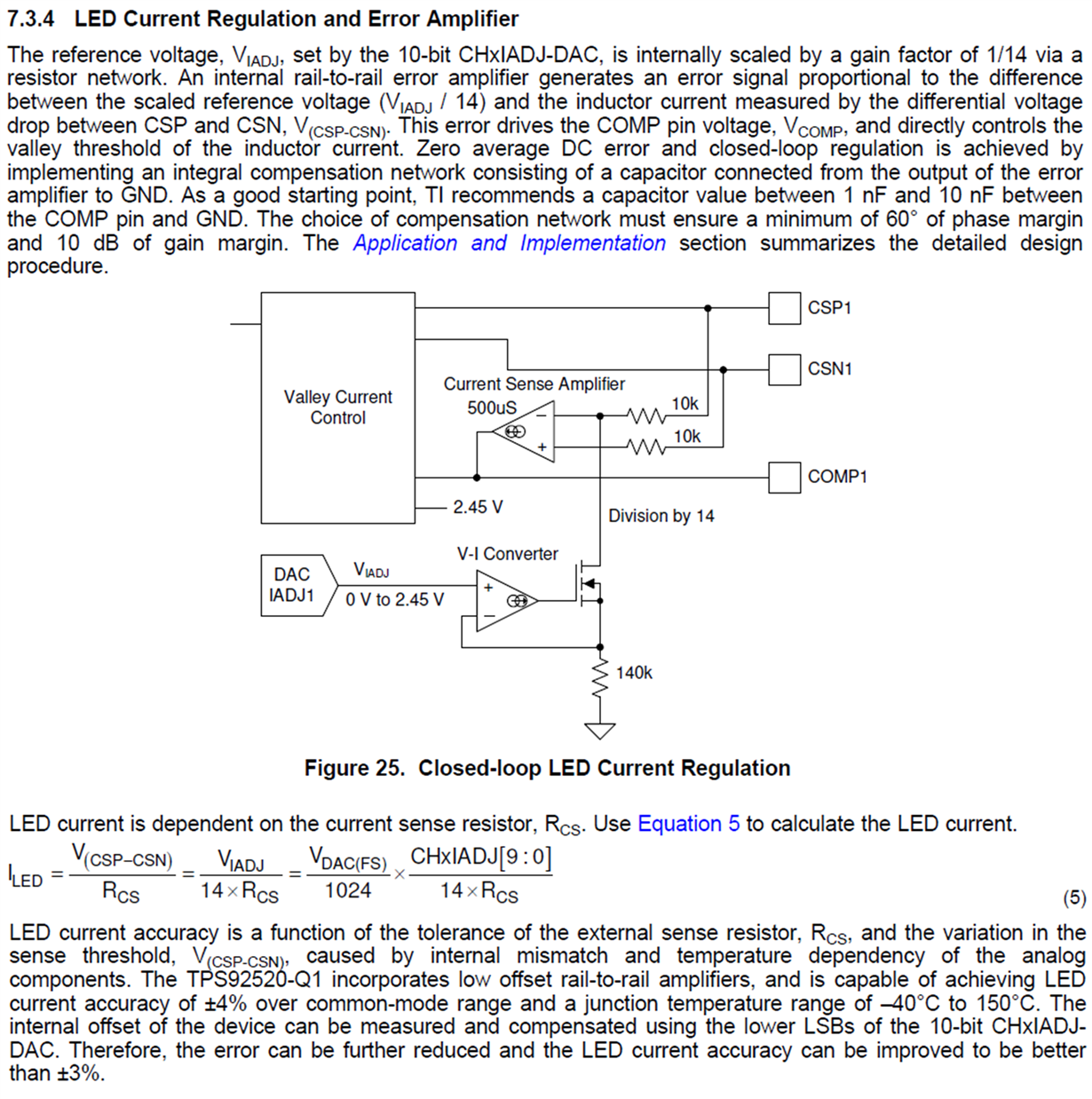Hi team,
I have some questions of TPS92520-Q1 from customers.
1. Is there any detecting system of LED circuit open?(There is no register bit for open circuit) How much the period of checking register bit for short/open fault detecting
2. Sampling time of monitoring LED voltage.
- Customer set 100% of PWM duty when LED is turned on. At that point, the voltage that is monitored may be the value of 18us ago?
3.Does the register of Limp home setting write down on non-volatile memory?
- If so, how many times it can be written on the memory?
4. When setting the value of current using register of IADJ, is there any equation of calculating the current?(Or just using Hex value?)
5. If the value of LED voltage is monitored, can we calculate the value of Hex as the below equation?
- (65/255) × CH1VLED = LED voltage
6. How can we adjust switching frequency of BUCK?
7. Is there any function for supporting EMC reduction?
8. Could you give me some example code of IC driver?
Thank you for your support in advance.
Best Regards,
Kevin Shin


